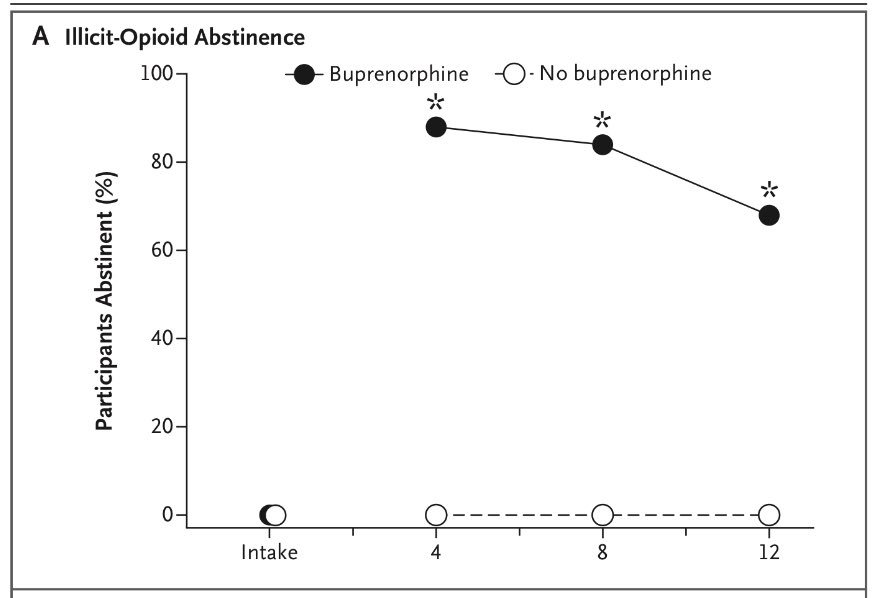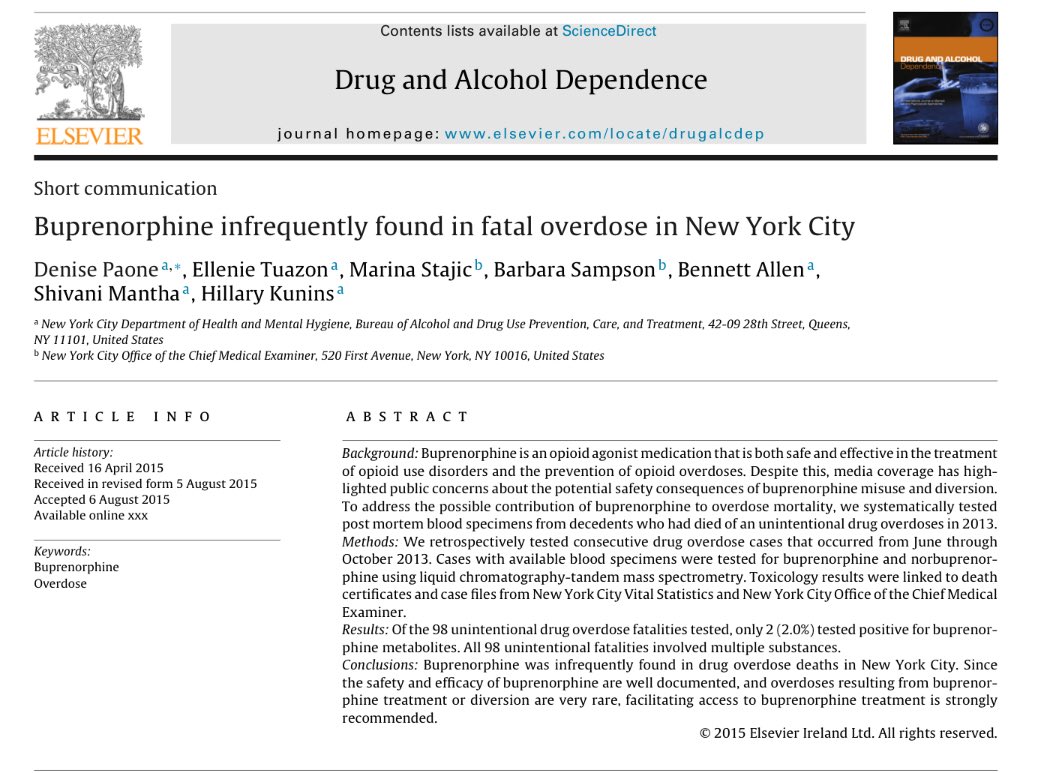I am increasingly of belief that low-barrier bupe has to be available outside of formal treatment settings. This accepts, I think, that there will be diversion & sharing of medication across high risk patient populations. I know this is in conflict with DEA & other laws. 1/
Having cared for 1000’s of patients with OUD, the majority have used street bupe before & almost always in health-improving ways: to reduce withdrawal symptoms when cannot find or afford heroin, to stabilize temporarily to visit family, or to reduce or even stop heroin use. 2/
We know this to be to true from @AlexBazazi and Jody Rich’s work: https://www.ncbi.nlm.nih.gov/pmc/articles/PMC3157053/">https://www.ncbi.nlm.nih.gov/pmc/artic... 3/
We also know that bupe availability, even for those seeking but not formally engaged in care, can dramatically reduce use of illicit opioids. In setting of widespread fentanyl contamination, where every use could be fatal, this is extremely important. http://www.nejm.org/doi/full/10.1056/NEJMc1610047">https://www.nejm.org/doi/full/... 4/
Yet, those providing office based bupe spend lot of time policing diversion & we struggle w/ patients who may be selling or misusing their bupe. We do our best to practice harm reduction & be non-judgemental, but as @adfoxMD has noted - it’s hard & we know we push people away. 5/
So, I think we need a new model where we have very low-barrier access to safe agonists (bupe, hydromorphone, etc) for those with an OUD not ready for formal treatment. Pharmacist dispensed bupe in 5 day supplies is one option, vending machines (as in Canada) may be another. 6/
This is not THE answer to overdose crisis, but I have heard way too many stories of those either stabilizing on street bupe (yet unable to do formal treatment), or being denied access to bupe because they can’t jump through our hoops or share narrow set of acceptable goals. 7/
We know there will be trade-offs to lowering barriers to access & we will need study and address those, but I think we know that current model is restricting access to far too many people, and they are dying. We need to dramatically expand access. Laws likely need to change. 8/
We must not make perfect (ie, complete abstinence while engaged in treatment) the enemy of good (patient seeking harm reduction, seeking to reduce risks, open to considering formal treatment but not ready yet) — & meds need to be available much earlier in stages of change. Fin/

 Read on Twitter
Read on Twitter



